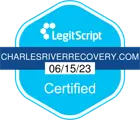What to Expect During Opioid Withdrawal
Withdrawal can be frightening for many people with substance addiction disorders. This procedure is extremely difficult, and without the right care, it may result in health problems. However, a team of experienced medical professionals can assist you in mitigating the symptoms.
Opioid addiction has increased all over the world. Understanding the withdrawal schedule will help you get the best assistance and care for your recovery. Learning more about the various components of opioid withdrawal can help you develop a few management techniques.
The Effects of Opioids
Opioids are a class of drugs that include prescription medications, such as oxycodone and hydrocodone. However, this class also contains illicit substances like heroin. Opioids are renowned for having strong pain-relieving abilities.
Opioids are prescribed to manage severe pain resulting from surgery, injury, or chronic conditions. However, these drugs have been abused, with medical professionals overprescribing them in recent years. As a result, millions of Americans have become addicted to these substances.
Opioids affect specific receptors in the brain. When opioids bind to these receptors, they reduce pain perception and produce relaxation. With continued opioid use, the brain adapts to the presence of these drugs. In turn, that can lead to tolerance. Over time, a person will need increasing doses of opioids to achieve the same pain relief or pleasurable effects.
During this time, many individuals also become physically dependent on opioids. Their bodies have adapted and will experience withdrawal symptoms when the drug is not in their system.
Symptoms of Opioid Withdrawal
There are several stages to the withdrawal process. At first, the symptoms can be overwhelming for many individuals. However, as the body adjusts to not having opioids in the system, these issues will subside over time.
Early Withdrawal Symptoms
Some of the first symptoms of opioid withdrawal include:
- Anxiety, including restlessness, nervousness, and an overall sense of unease
- Agitation, irritability, and mood swings
- Sweating, especially at night
Peak Withdrawal Symptoms
While the early symptoms are not pleasant, it is only the first step of the process. As the body readjusts, a person could experience:
- Nausea and vomiting
- Muscle aches
- Diarrhea, which can lead to dehydration
Late-Stage Withdrawal Symptoms
At this part of the process, the worst symptoms are generally in the past. However, they may have issues with:
- Insomnia
- Depression, feelings of hopelessness, sadness, and anhedonia (loss of pleasure)
- Drug cravings, which if not appropriately managed can lead to relapse
What Factors Can Affect These Withdrawal Symptoms?
Unfortunately, there is no “one-size-fits-all” approach to opioid withdrawals. One person may experience only a few of these symptoms while others may have intense issues. There are several factors that can affect these symptoms.
The Opioid Type
The specific opioid used can play an important role in determining the duration of withdrawal. Short-acting opioids like heroin tend to produce more intense but shorter-lived withdrawal symptoms, often lasting only around a week. On the other hand, long-acting opioids, such as methadone and buprenorphine, can lead to a lengthy withdrawal phase lasting several weeks or even months.
Duration of Use
The length of time that an individual has been using opioids also influences the duration of withdrawal. Prolonged use is associated with longer withdrawal periods. However, even short-term use can lead to serious withdrawal symptoms during a shorter period of time.
Dosage and Frequency
The dosage and frequency of opioid use can impact this process. Higher doses and more frequent use tend to cause more severe symptoms and a longer duration of withdrawal.
Individual Factors
Several factors can also affect how long the withdrawal period will last. Age can influence withdrawal duration. Younger individuals may recover more quickly than older adults because of differences in metabolism.
Along with that, genetics also plays a role. Some individuals may have factors that make them more susceptible to prolonged withdrawal symptoms.
Finally, the overall health of an individual can impact the duration. Individuals with underlying health conditions may experience longer withdrawal periods because of their compromised physiological systems.
How Long Does Opioid Withdrawal Last?
While this timeline can change from person to person, most people experience symptoms along this general schedule for opioid withdrawal.
Acute Withdrawal
The acute withdrawal phase begins within six to 12 hours after the last use of short-acting opioids or within 24-30 hours for longer-acting opioids. A person might experience anxiety, restlessness, sweating, and muscle aches for the first few days.
However, the symptoms will peak by days three to five. During this time, the individual could have nausea, vomiting, diarrhea, abdominal cramps, chills, and intense drug cravings.
By days six and seven, the symptoms gradually begin to subside, but there could be some discomfort and psychological symptoms.
Post-Acute Withdrawal
Post-acute withdrawal Syndrome (PAWS) can affect individuals recovering from substance abuse after the acute withdrawal phase, or first week, has ended. These symptoms are persistent. Sometimes, they can continue for weeks, months, or even years following the end of substance use.
PAWS is associated with substances that can lead to physical dependence, such as opioids, alcohol, and benzodiazepines. After the acute phase, some individuals will experience PAWS. The symptoms of this phase include:
- Mood swings
- Anxiety
- Depression
- Insomnia
- Fatigue
- Drug cravings that can result in relapse
For the most part, the intensity of PAWS will vary. Like the initial withdrawal stage, some individuals experience milder symptoms while others may feel more severe effects.
Seeking medical guidance and support during opioid withdrawal is always recommended. Healthcare professionals can provide appropriate treatment and medication. In turn, that can help to alleviate symptoms and improve the overall experience of this process.
How to Manage Symptoms During These Withdrawal Periods
Successfully managing opioid withdrawal is necessary for individuals seeking to overcome opioid addiction. After this stage, they can begin their journey to recovery. No matter what, you want to have a comprehensive plan to address the process’s physical and psychological aspects. Here are some steps and strategies for successfully managing opioid withdrawal.
Seek Professional Help
Before starting any program, consult a healthcare provider, addiction specialist, or addiction treatment center. They can assess your situation, provide guidance, and create a personalized treatment plan.
You might want to consider undergoing medical detoxification. This type of treatment can help if you have been using opioids for an extended period or have a history of severe withdrawal symptoms. Medical detox is conducted under the supervision of healthcare professionals. During this time, they can provide medication to alleviate withdrawal symptoms and monitor your progress.
Another option is medication-assisted treatment (MAT). This treatment involves methadone, buprenorphine, or naltrexone to reduce cravings and withdrawal symptoms. These medications are important to a successful recovery plan. They are often used in conjunction with counseling and therapy.
Take Personal Care
During this stage, it is important to maintain proper nutrition and hydration. You will want to eat balanced meals, drink plenty of water, and consider taking supplements if necessary. Opioid withdrawal can lead to dehydration and nutrient deficiencies.
Rest is important. Sleep disturbances are common during withdrawal. Establishing a regular sleep schedule and practicing good sleep hygiene can help. Consider practicing mindfulness, meditation, deep breathing exercises, or yoga to manage anxiety and stress during withdrawal.
Individual and group therapy sessions are often important parts of a treatment strategy. Cognitive behavioral therapy (CBT) and contingency management are also effective for managing addiction-related behaviors and thought patterns.
Don’t forget to incorporate regular physical activity into your routine. Exercise can help reduce stress, improve mood, and promote overall well-being.
Find Support
Social support is key to your success. You can always connect with a supportive network of friends and family who understand your goals and can provide emotional support. Many people find that attending meetings of groups like Narcotics Anonymous helps them establish a sober social network and build a peer-based support system outside of their family or close friends.
Be Prepared
During this time, you want to avoid relapsing. As you proceed through this process, make sure to avoid situations, people, or places that may trigger drug cravings. Changing your environment is a part of preventing relapse.
You may want to work with a therapist or counselor to develop short-term and long-term goals for your recovery. Keep in mind that recovery is a journey with its ups and downs.
Once you’ve completed initial treatment, participate in outpatient therapy, support groups, or continued medication management. These groups can help with your continued success.
Finally, you want to stay committed. Recovery from opioid addiction can be difficult. However, you need to follow your treatment plan and continue seeking support even after withdrawal symptoms have subsided.
Can Rehab Help With Opioid Withdrawal?
Rehabilitation plays a role in assisting individuals in their recovery from opioid addiction. These treatment programs provide a structured and safe environment that supports individuals in breaking free from addiction. Additionally, rehab offers various components, including:
- Medical supervision during detoxification
- Medication-assisted treatment to manage cravings
- Therapy and counseling to address underlying issues
- Education on addiction
Rehab programs also encourage peer support, provide holistic approaches for overall well-being, and offer life skills training. Rehab helps individuals develop relapse prevention strategies, accountability, and a sense of accomplishment for milestones in their recovery journey. Also, they assist in aftercare planning for continued support after leaving the rehab facility. With that, these programs take a comprehensive approach to treatment that addresses addiction’s physical, psychological, and social aspects.
Take the Next Step With Charles River Recovery
If you or someone close to you is battling addiction, know that recovery is possible. At Charles River Recovery, we offer assistance to individuals dealing with substance use disorders, including those struggling with opioid addiction. We know that the withdrawal process is a stumbling block for many individuals. Under our guidance, we can help ease your concerns and help you reach your goal of living an opioid-free life.
Our team of trained medical professionals is here to create a personalized treatment plan that caters to your specific needs and circumstances. We want to put you on the path to a successful recovery journey.
At Charles River Recovery, we focus on addressing the root causes of addiction and providing the necessary tools and strategies for a healthier life free of addiction. Take the first step towards a brighter future by contacting our team today.






